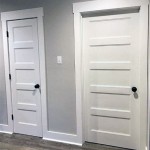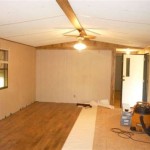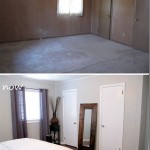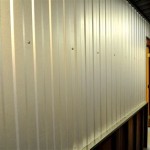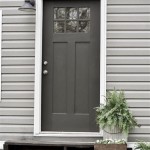A Comprehensive Guide To Prehung Interior Doors With Frames And Glass
Prehung interior doors with frames and glass offer a convenient and aesthetically pleasing solution for homeowners and contractors alike. Unlike slab doors, which require separate installation of the frame, hinges, and other hardware, prehung doors arrive as a complete unit, simplifying the installation process and potentially saving time and labor costs. The inclusion of glass panels within the door design adds depth, natural light, and visual interest to interior spaces.
This article provides a detailed exploration of prehung interior doors with frames and glass, encompassing their benefits, types, considerations for selection, installation guidelines, and maintenance tips. Understanding these aspects enables informed decision-making when choosing and installing these doors for residential or commercial properties.
Advantages of Prehung Interior Doors with Glass
Prehung doors offer several advantages over traditional slab doors, particularly when incorporating glass elements:
Simplified Installation: The primary benefit of prehung doors is the streamlined installation process. Because the door is already mounted within its frame, complete with hinges and often pre-drilled for hardware, the installer only needs to ensure the frame is properly aligned and secured within the door opening. This reduces the complexity and potential for errors associated with installing individual components separately. This is exceptionally advantageous for DIY enthusiasts and contractors working on tight deadlines. The consistent alignment and proper mortise cuts inherent in prehung construction minimize the need for on-site adjustments, leading to a cleaner, more professional finished product.
Consistent Quality and Alignment: Factory assembly ensures consistent quality and precise alignment between the door and frame. This is especially crucial when glass panels are involved, as proper alignment minimizes stress on the glass and prevents potential cracking or breakage. The pre-fabricated nature of prehung doors eliminates variations that can occur when assembling components individually, contributing to a smoother operation and longer lifespan.
Enhanced Aesthetics: The inclusion of glass panels elevates the aesthetic appeal of interior doors, creating a more open and inviting atmosphere. Glass allows natural light to filter through, brightening adjacent spaces and reducing the need for artificial lighting during the day. The availability of various glass types, including clear, frosted, textured, and stained glass, offers homeowners a wide range of design options to complement their interior décor. Furthermore, prehung doors allow manufacturers to integrate intricate details and designs around the glass panels, enhancing the overall visual impact.
Improved Noise Reduction (Depending on Glass Type): While all interior doors provide some level of sound dampening, selecting a prehung door with specialized glass can enhance noise reduction capabilities. Laminated glass, for instance, consists of multiple layers of glass bonded together with a plastic interlayer, which effectively absorbs sound vibrations. This can be particularly beneficial in areas where privacy and quiet are desired, such as home offices or bedrooms.
Types of Prehung Interior Doors with Glass
Prehung interior doors with glass encompass a wide array of styles and configurations to suit diverse architectural designs and functional requirements:
Panel Doors with Glass Inserts: This is a common type, featuring solid panels interspersed with glass inserts. The glass panels can be rectangular, square, or arched, and may be clear, frosted, or textured. The panels themselves can be flat or raised, adding further visual interest. These doors offer a balance between privacy and light transmission and are suitable for various rooms within a home.
French Doors: Characterized by multiple glass panes separated by muntins or grilles, French doors are often used as interior doors to connect living spaces or to provide access to patios or balconies. They typically swing outward or inward on hinges and create a grand, elegant feel. The number and size of the glass panes can vary depending on the desired aesthetic.
Sliding Glass Doors: While commonly associated with exterior applications, sliding glass doors can also be used as interior doors to save space and create a seamless transition between rooms. These doors slide horizontally along a track, eliminating the need for swing space. Tempered glass is typically used for safety reasons.
Pocket Doors with Glass: Pocket doors slide into a cavity within the wall, disappearing completely when open. Incorporating glass into a pocket door adds natural light to the room and creates a sense of spaciousness. This type of door is ideal for maximizing usable floor space in small areas. The glass panel is usually smaller in proportion to the total door area to accommodate the structural requirements of the door mechanism.
Full-Lite Doors: These doors feature a single large glass panel that spans almost the entire door surface. They maximize light transmission and create a contemporary, airy aesthetic. These doors typically require tempered glass for safety and are often used in areas where a visual connection between spaces is desired.
Glass Options: The type of glass used significantly impacts the appearance and function of the door. Clear glass allows maximum light penetration, while frosted glass provides privacy. Textured glass adds visual interest, and stained glass creates a decorative effect. Tempered glass is a safety requirement in many applications, as it shatters into small, blunt pieces instead of sharp shards. Laminated glass offers enhanced security and soundproofing. Low-E glass can improve energy efficiency by reducing heat transfer.
Key Considerations When Selecting Prehung Interior Doors with Frames and Glass
Selecting the appropriate prehung interior door with frame and glass requires careful consideration of several factors:
Door Size and Orientation: Accurate measurements of the door opening are essential to ensure a proper fit. Prehung doors are typically available in standard sizes, but custom sizes may be necessary for non-standard openings. The swing orientation of the door (left-hand or right-hand) must also be specified to ensure the door opens in the desired direction.
Material and Finish: The material of the door frame and the door itself influences the door's durability, appearance, and maintenance requirements. Common materials include wood, fiberglass, and steel. Wood doors offer a classic aesthetic and can be stained or painted to match the interior décor. Fiberglass doors are resistant to moisture and warping, making them suitable for bathrooms and laundry rooms. Steel doors are durable and secure. The finish of the door should be chosen to complement the surrounding décor. Pre-finished doors offer a convenient, ready-to-install option, while unfinished doors allow for custom staining or painting.
Glass Type and Design: The type of glass should be selected based on the desired level of privacy, light transmission, and aesthetic appeal. Clear glass maximizes light penetration, while frosted glass provides privacy. Textured glass adds visual interest, and stained glass creates a decorative effect. Tempered glass is a safety requirement in many applications. The design of the glass panel should complement the overall style of the home.
Hardware Selection: The door hardware, including the doorknob, lockset, and hinges, should be chosen for both functionality and aesthetic appeal. The hardware should be compatible with the door material and finish. Consider the security needs of the space when selecting the lockset. Choose hinges that are appropriately sized for the weight and size of the door.
Budget: Prehung interior doors with glass vary in price depending on the material, size, glass type, and hardware. Establishing a budget upfront helps narrow down the choices and prevents overspending. It is important to factor in the cost of installation, as well as any necessary modifications to the door opening.
Installation Guidelines for Prehung Interior Doors with Glass
Proper installation is crucial for ensuring the smooth operation and longevity of a prehung interior door with glass:
Preparation: Ensure the door opening is square, plumb, and level. Remove any existing door or trim. Check the rough opening dimensions against the dimensions of the prehung door. Make any necessary adjustments to the opening before proceeding. It is advisable to use shims during door fitting to ensure accurate leveling.
Installation: Carefully lift the prehung door into the opening. Use shims to level the frame in the opening. Secure the frame to the wall studs using screws or nails. Check the alignment of the door within the frame. Adjust the shims as needed to ensure the door is square and plumb. Install the trim around the door frame to conceal the shims and create a finished look.
Hardware Installation: Install the doorknob, lockset, and strike plate according to the manufacturer's instructions. Ensure the hardware functions smoothly and securely. Adjust the strike plate as needed to ensure the door latches properly.
Finishing Touches: Caulk around the door frame to seal any gaps and prevent air infiltration. Paint or stain the door and trim to match the interior décor. Install weather stripping around the door frame to improve energy efficiency and reduce drafts.
Maintenance Tips for Prehung Interior Doors with Glass
Regular maintenance helps preserve the appearance and functionality of prehung interior doors with glass:
Cleaning: Clean the door and glass regularly with a mild detergent and water. Avoid using abrasive cleaners or harsh chemicals, which can damage the finish or the glass. Wipe the door and glass dry with a soft cloth.
Hardware Maintenance: Lubricate the hinges and lockset periodically to ensure smooth operation. Tighten any loose screws on the hinges, doorknob, or lockset. Replace any damaged or worn hardware promptly.
Glass Care: Inspect the glass for cracks or chips. Repair any damage promptly to prevent further deterioration. Apply a glass cleaner specifically designed for the type of glass used in the door. Avoid leaning against the glass, as this can put undue stress on the panel.
Frame Maintenance: Inspect the door frame for any signs of damage, such as rot or warping. Repair any damage promptly to prevent it from spreading. Paint or stain the door frame as needed to protect it from the elements.
Weather Stripping: Check weather stripping Regularly to ensure it remains intact and tight against the door. Replace weather stripping as needed to maintain a tight seal against air infiltration and moisture.
By understanding the various aspects of prehung interior doors with frames and glass, from their advantages and types to installation and maintenance, homeowners and contractors can make informed decisions that lead to aesthetically pleasing and functional interior spaces.

Guide To Interior Door Styles And Types

Interior Door Guide The Home Depot

Mmi Door 36 In X 80 Left Handed Unfinished Pine Wood Clear Glass Full Lite Single Prehung Interior Z019931l The Home Depot

Krosswood Doors 36 In X 80 Rustic Knotty Alder Left Hand Full Lite Clear Glass Red Chestnut Stain Wood Single Prehung Interior Door Phid Ka 402 30 68 138 Lh Rc The Home Depot

A Guide To Updating Your Doors And Hardware Jenna Sue Design

Glass Doors How To Choose Pros Cons More

A Comprehensive Guide To Entry Door Replacement With Waudena Doors

Mmi Door White Laminate 32 In X 80 Right Hand Full Lite Primed Mdf Single Prehung Interior On 4 9 16 Jamb Z03752527r The Home Depot

Flush Doors A Comprehensive Guide Oppolia

Interior Door Installation Tips Tricks Trimlite
Related Posts

